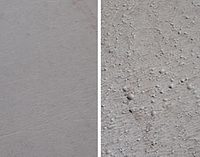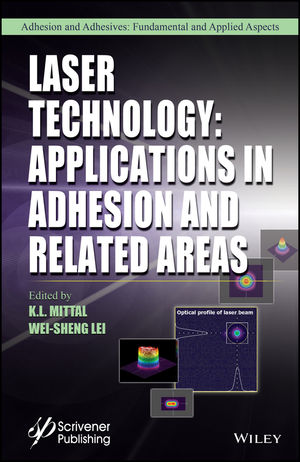Novel, Waterborne, Chlorine-Free Adhesion Promoter for TPO Substrates

Due to the high chemical stability, low price, excellent balance of physical properties, possible recycling, etc., the amount of polypropylene (PP) and thermoplastic olefin (TPO) consumed by automotive parts, household electrical appliances and the molded general goods businesses continues to increase. However, PP and TPO are plastics with low surface energy that make painting and adhesion problematic, hence chlorinated polyolefin (CPO) or chlorine-free modified polyolefin (CFPO) resins have found wide use as adhesion promoters.
In recent years, waterborne adhesion promoters applied to TPO substrates have
been widely studied for use as both interior and exterior automobile coatings
due to an increasing environmental awareness by industry. Furthermore, the
automotive coatings industry desires waterborne coatings for TPO substrates that
coalesce and adhere well at low baking temperatures, such as 80

Experimental
Polyolefin Starting MaterialsPolyolefin with different propylene content: Three different propylene-based polyolefins with relatively low crystallinity and Tm were used as the starting materials of WCFPOs. z-PO is a traditional polyolefin polymerized with a Ziegler-Natta catalyst and contains a smaller amount of propylene than the other polyolefins. m-PO is a metallocene polyolefin and has as low a Tm as z-PO, although the propylene content is much higher than that of the z-PO. m-PP is also polymerized with a metallocene catalyst, but without any ethylene and other a-olefin monomers. The crystallinity and the Tm of m-PP are low enough due to the low tacticity. The starting materials were chosen for each resulting WCFPO to have a similar molecular weight, Tm, and a minimum film formation temperature (MFT).
m-PP with different Tm: To further investigate the m-PP, three different WCFPOs were prepared with m-PPs having different Tm adjusted by their tacticities. The resulting WCFPOs were submitted to an exterior coating performance test.

Preparation of WCFPO
Each polyolefin starting material was graft-modified with maleic anhydride and other acrylic monomers in the melt state. The content of maleic anhydride and acrylic monomers was approximately 2.0 and 1.5 wt% in the modified polyolefin, respectively. The modified polyolefin was emulsified with a nonionic surfactant and a neutralizer (ammonia) and then the solid content was adjusted to 30 wt%. Five WCFPO samples were prepared and their physical properties are shown in Table 1. The weight average molecular weights (Mw) and the molecular weight distributions (Mw/Mn) were measured with gel permeation chromatography [(GPC) Tosoh, GMHHR-H (S) HT, eluent: 1, 2, 4-trichlorobenzene, temperature: 145Measurement of Tensile Strength
Tensile strength of the modified
polyolefin was evaluated with the following condition. The modified polyolefin
was compression-molded and cut to dumbbell-shaped specimens (#2 JIS) with the
thickness of about 1 mm. Then the tensile strength was measured with a
universal testing machine Tensilon RTC-1325A (A&D Co., Ltd.) at the rate of
200 mm/min, 23

Peel Strength
Figure 2 shows the peel strength of WCFPOs onto three different polyolefin substrates. Each substrate coated with WCFPO was processed either at 80
Exterior Coating Performance Test
The m-PP based WCFPO-3 showed very interesting properties in the tensile strength test and the peel strength test as compared with the z-PO based WCFPO-1 and the m-PO based WCFPO-2. It was interesting for the authors to see the availability of the m-PP based WCFPO in the field of automotive coatings. In this study three m-PP based WCFPOs with different Tm were prepared by adjusting the tacticity and the exterior coating performance test was conducted. The results are shown in Table 2.The adhesion improved as the Tm of the WCFPO decreased, but on the other hand the gasoline resistance is better as the Tm of the WCFPO increased as long as the film formation was sufficient at this baking temperature. The film formation of WCFPO-5 was not sufficient at 80
Looking for a reprint of this article?
From high-res PDFs to custom plaques, order your copy today!





